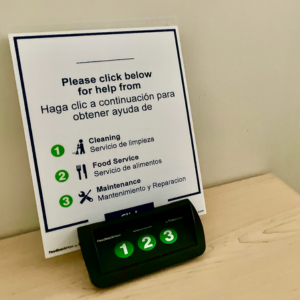
Creating meaningful patient experiences remains a top priority for healthcare organizations. Recent research from The Beryl Institute reveals just how vital patient experience is, with an overwhelming 96% of healthcare consumers rating it as important or very important.
Yet, effectively delivering positive patient experiences can be challenging in the intricate, fast-paced healthcare environment. Hospital systems are complex, with many moving parts – from fluctuating patient volumes to staffing changes – that impact hospital operations and the experiences of patients and visiting families.
To truly transform patient experiences, hospitals must take a systemwide approach. This involves regularly gathering patient feedback to pinpoint problem areas, empowering staff at all levels to own the patient experience, and creating a culture focused on continuous improvement. With commitment from leadership and collaboration across departments, hospitals can begin to make positive changes that resonate through the entire organization and create more compassionate, meaningful experiences for every person they serve.
How can hospitals do this? There are many creative ways to increase patient satisfaction. By implementing the latest patient engagement tools and technologies, healthcare organizations can gain real-time feedback on patient experience, optimize operations, and drive measurable improvements in satisfaction results.
Let’s explore patient engagement tools that will ensure a marked improvement in satisfaction.
- Collecting Continuous Feedback
- Patient Self-Service Opportunities
- Saving Time and Costs by Deploying the Right Resources
1. Collecting Continuous Feedback
While tools like HCAHPS surveys provide important metrics, truly improving patient experience requires a broader, more engaged approach. Comprehensive as survey metrics may be, the continuous real-time insights enabled by FeedbackNow offer distinct advantages over periodic measurements alone. You can take a deeper dive into the differences between surveys and FeedbackNow in this blog.
Collecting continuous feedback and correlating it with additional data points like foot traffic and noise levels gives real-time insights into the patient journey and allows your teams to focus their efforts in the areas that need it the most.
Understanding when and where conditions change provides better insight into the needs of your organization and leads to more positive patient experiences.
Simple real-world collection devices, strategically placed throughout the hospital in areas where collecting feedback is most impactful, uncover issues quickly so they can be addressed rapidly. Understand peak times in the ER, friendliness of staff, cafeteria service levels, cleanliness, and much more.
2. Patient Self-Service Opportunities
Giving patients greater autonomy boosts satisfaction.
Innovations like on-demand service buttons let patients directly request blankets or meal removals, restoring independence lost in hospitalization. By streamlining basic requests, patients avoid interrupting nurses for minor needs. This preserves dignity, empowering patients as active partners in their care.
Enabling patient self-service also benefits nurses. With fewer disruptions, nurses can better focus on critical care. According to a recent study by The American Journal of Managed Care, “Nursing interruption events occur frequently, come from many sources, have complex causes, and lead to negative outcomes. Interruption also has a time cost and can directly lead to medication errors.”
Simple solutions that empower patients and reduce nurse burden create better experiences for all. Patients feel respected, engaged, and satisfied, while nurses can deliver safer, more attentive care. Small changes can profoundly improve hospital stays.
3. Save Time and Costs by Deploying the Right Resources
Like most leaders these days, you’re probably managing with a leaner team. It’s tough. But smart technologies can help you use your people more strategically so you can do more with less.
Rather than scrubbing lobby restrooms every 2 hours, smart monitoring systems can track actual usage and send alerts only when attention is needed. This data-driven approach allows staff to focus where they are most useful in the moment, not just follow rigid rotations. Dynamic, responsive cleaning aligned to real-time restroom traffic frees up labor hours that can be reallocated to other critical tasks.
As a result, staff productivity increases, resources are optimized, and cleanliness standards improve. What appears seamless and effortless to patients is actually the output of intelligent back-of-house systems fine-tuned to enable efficient, timely service.
These systems can also be used to automatically notify the right teams with the push of a button when linens run low, ICU gowns need replenished, or the soil room needs attention.
Real-time operational solutions allow you to match staffing to changing needs. No more guesswork. And your people can work more efficiently and avoid wasted time. That’s a win-win for staff efficiency and the patient experience.
All of this appears seamless to the patients and goes a long way toward improving patient satisfaction.
Implementing these Creative Ways to Increase Patient Satisfaction
Partnering with patient experience improvement experts like FeedbackNow helps streamline adoption of these innovative approaches. Their real-time collection devices and operational insights platform turn patient and staff feedback into timely improvements. The result? A continuously evolving, patient-centric experience.
Even small changes can make a huge difference in transforming patient experiences. Collecting real-world signals and using real-time alerts and insights allow your teams to focus on areas that matter most. This saves them time, helps reduce burnout, and improves team communication and staff efficiency, allowing nurses to focus on providing the best care possible.
When hospitals take an organization-wide approach to continuous improvement by regularly soliciting patient perspectives, empowering staff to own the experience, and nurturing a culture focused on compassion, hospitals can deliver experiences that exceed expectations.
With buy-in across departments and commitment from leadership, positive transformations can ripple through the entire system.
Luckily, innovative solutions make elevating experiences smoother than ever. Real-time feedback systems capture the patient’s voice during their journey, providing actionable insights. Strategic patient engagement tools boost both autonomy and satisfaction. And smart technologies optimize hospital operations behind the scenes, so staff can focus fully on delivering empathetic, personalized care.
With the right solutions and culture shift, hospitals can deliver experiences as meaningful as clinical outcomes. Patients feel engaged, staff feel empowered, and organizations see tangible improvements. It’s time to redefine the patient experience and optimize your operations.
Give us a shout to learn more!


